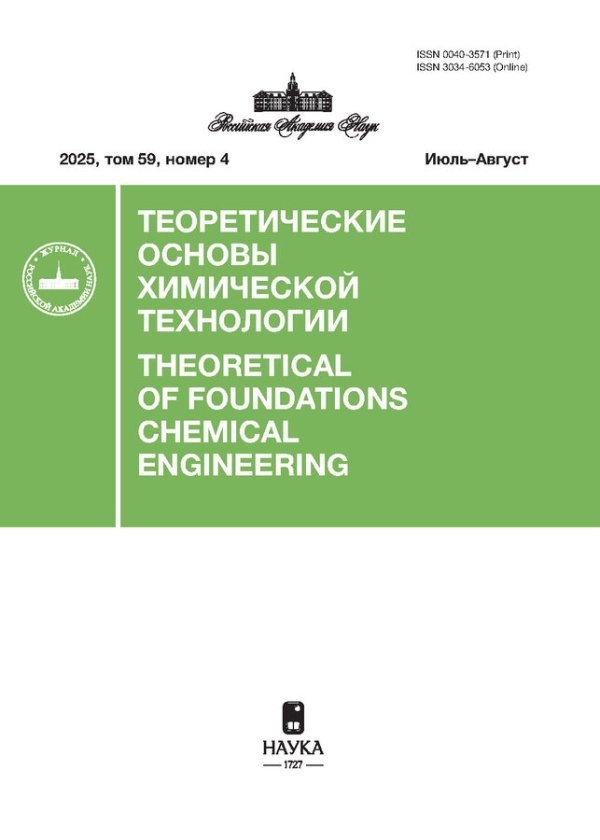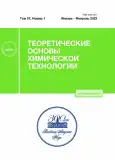Unsteady-State Mass Transfer in Gels with Microorganisms
- Authors: Khramtsov D.P.1, Khramtsov O.A.2, Pokusaev B.G.2,1, Vyazmin A.V.2,1, Nekrasov D.A.2,1
-
Affiliations:
- RTU MIREA—Russian Technological University
- Moscow Polytechnic University
- Issue: Vol 57, No 1 (2023)
- Pages: 71-80
- Section: Articles
- Published: 01.01.2023
- URL: https://journals.rcsi.science/0040-3571/article/view/138402
- DOI: https://doi.org/10.31857/S0040357123010074
- EDN: https://elibrary.ru/BMCHBK
- ID: 138402
Cite item
Full Text
Abstract
Hydrogels are promising for use in tissue engineering as matrices for cell incubation and with subsequent use of such biomaterial systems as bioinks suitable for 3D bioprinting. The heat and mass transfer in hydrogel materials based on agarose and gelatin with model microorganisms incubated in the bulk of the gel are studied by the optical methods of spectroscopy and microscopy. The propagation of the fronts of the nutrient medium in pure gelatin hydrogels and mixed hydrogels based on agarose with the addition of gelatin are compared to determine the diffusion properties of the mixed hydrogels that can ensure the delivery of nutrient components to microorganisms. New data are obtained on the degree of heterogeneity in the growth of microorganisms during their bulk incubation under various temperature conditions of incubation, which is necessary to control the properties of bioink in bioprinting. An analytical description of the curve of cell growth in the gel is proposed, and on its basis an expression for determining the cell growth rate is obtained. A numerical model is developed to describe the absorption of nutrients by cells during their growth.
About the authors
D. P. Khramtsov
RTU MIREA—Russian Technological University; RTU MIREA—Russian Technological University
Email: dp@khramtsov.net
107023, Moscow, Russia; 119571, Moscow, Russia
O. A. Khramtsov
Moscow Polytechnic University
Email: dp@khramtsov.net
107023, Moscow, Russia
B. G. Pokusaev
Moscow Polytechnic University; RTU MIREA—Russian Technological University
Email: dp@khramtsov.net
107023, Moscow, Russia; 119571, Moscow, Russia
A. V. Vyazmin
Moscow Polytechnic University; RTU MIREA—Russian Technological University
Email: dp@khramtsov.net
107023, Moscow, Russia; 119571, Moscow, Russia
D. A. Nekrasov
Moscow Polytechnic University; RTU MIREA—Russian Technological University
Author for correspondence.
Email: dp@khramtsov.net
107023, Moscow, Russia; 119571, Moscow, Russia
References
- Wasupalli G.K., Verma D. Thermosensitive injectable hydrogel based on chitosan-polygalacturonic acid polyelectrolyte complexes for bone tissue engineering // Carbohydrate Polymers. 2022. V. 294. P. 119769.
- Aljohani W., Ullah M.W., Zhang X., Yang G. Bioprinting and its applications in tissue engineering and regenerative medicine // International Journal of Biological Macromolecules. 2018. V. 107. Part A. P. 261.
- Wang Z., Kapadia W., Li C., Lin F., Pereira R.F., Granja P.L., Sarmento B., Cui W. Tissue-specific engineering: 3D bioprinting in regenerative medicine // J. Controlled Release. 2021. V. 329. P. 237.
- Leberfinger A.N., Ravnic D.J., Dhawan A., Ozbolat I.T. Concise Review: Bioprinting of Stem Cells for Transplantable Tissue Fabrication // Stem Cells Translational Medicine. 2017. V. 6. P. 1940.
- Pokusaev B.G., Karlov S.P., Vyazmin A.V., Nekrasov D.A. Laws of the formation and diffusion properties of silica and agarose gels // Theoretical Foundations of Chemical Engineering. 2018. V. 52. № 2. P. 200. [Покусаев Б.Г., Карлов С.П., Вязьмин А.В., Некрасов Д.А. Закономерности формирования и диффузионные свойства силикатных и агарозных гелей // Теоретические основы химической технологии. 2018. Т. 52. № 2. С. 200.]
- He Y., Yang F., Zhao H., Gao Q., Xia B., Fu J. Research on the printability of hydrogels in 3D bioprinting // Sci Rep. 2016. № 6. P. 29977
- Hong S., Kim J.S., Jung B., Won C., Hwang C. Coaxial bioprinting of cell-laden vascular constructs using a gelatin–tyramine bioink // Biomater. Sci. 2019. № 7. P. 4578.
- Chekini M., Krivoshapkina E., Shkodenko L., Koshel E., Shestovskaya M., Dukhinova M., Kheiri S., Khuu N., Kumacheva E. Nanocolloidal Hydrogel with Sensing and Antibacterial Activities Governed by Iron Ion Sequestration // Chemistry of Materials. 2020. № 32 (23). P. 10066.
- Han X., He J., Wang Z., Bai Z., Qu P., Song Z., Wang W. Fabrication of silver nanoparticles/gelatin hydrogel system for bone regeneration and fracture treatment // Drug Delivery. 2021. № 28. P. 319.
- Guiting L.,Yuan Z., Xianlong Z., Shaoyun G. Advances in hydrogels for stem cell therapy: regulation mechanisms and tissue engineering applications // J. Mater. Chem. B. 2022. № 10. P. 5520.
- Bedell M.L. Human gelatin-based composite hydrogels for osteochondral tissue engineering and their adaptation into bioinks for extrusion, inkjet, and digital light processing bioprinting // Biofabrication. 2022. № 14. P. 045012.
- Pokusaev B.G., Vyazmin A.V., Zakharov N.S., Khramtsov D.P., Nekrasov D.A. Unsteady mass transfer of nutrients in gels with channels of different spatial structures // Theoretical Foundations of Chemical Engineering. 2020. V. 54. P. 277. [Покусаев Б.Г., Вязьмин А.В., Захаров Н.С., Храмцов Д.П., Некрасов Д.А. Нестационарный массоперенос питательных веществ в гелях с каналами различной пространственной структуры // Теоретические основы химической технологии. 2020. Т. 54. № 2. С. 163.]
- Меледина Т.В., Давыденко С.Г. Дрожжи Saccharomyces serevisiae. Морфология, химический состав, метаболизм. СПб.: Университет ИТМО, 2015.
- Радченко В.Г., Шабров А.В., Зиновьева Е.Н., Ситкин С.И. Заболевания печени и желчевыводящих путей. СПб.: СпецЛит, 2011.
- The Yeasts: A Taxonomic Study / Eds. Kurtzman C.P., Fell J.W., Boekhout T. Amsterdam: Elsevier, 2011.
- Красников И.В., Привалов В.Е., Сетейкин А.Ю., Фотиади А.Э. Распространение оптического излучения в биологических тканях // Вестник Санкт-Петербургского университета. Медицина. 2013. № 4. С. 202.
- Beck J.V., Blackwell B., Haji-Sheikh A. Comparison of some inverse heat conduction methods using experimental data // International J. Heat and Mass Transfer. 1996. V. 39. P. 3649.
- Pottmann H., Leopoldseder S., Hofer M. Approximation with active B-spline curves and surfaces // Proc. 10th Pacific Conference on Computer Graphics and Applications, 2002. P. 8.
- Iliev A., Kyurkchiev N., Markov S. On the approximation of the step function by some sigmoid functions // Mathematics and Computers in Simulation. 2017. V. 133. P. 223.
- Kyurkchiev N., Markov S. Sigmoidal Functions: Some Computationaland Modelling Aspects // Biomath Communications. 2014. № 1/2.
- Pokusaev B.G., Karlov S.P., Nekrasov D.A. Agarose gels with bioresorbable additives: The kinetics of the formation, structure, some properties // Chemical Engineering Transactions. 2019. V.74. P. 1171.
- Jakab C., Norotte C., Marga F. Tissue engineering by self-assembly and bioprinting of living cells // Biofabrication. 2010. V. 2. № 2. P. 022001.
Supplementary files





















